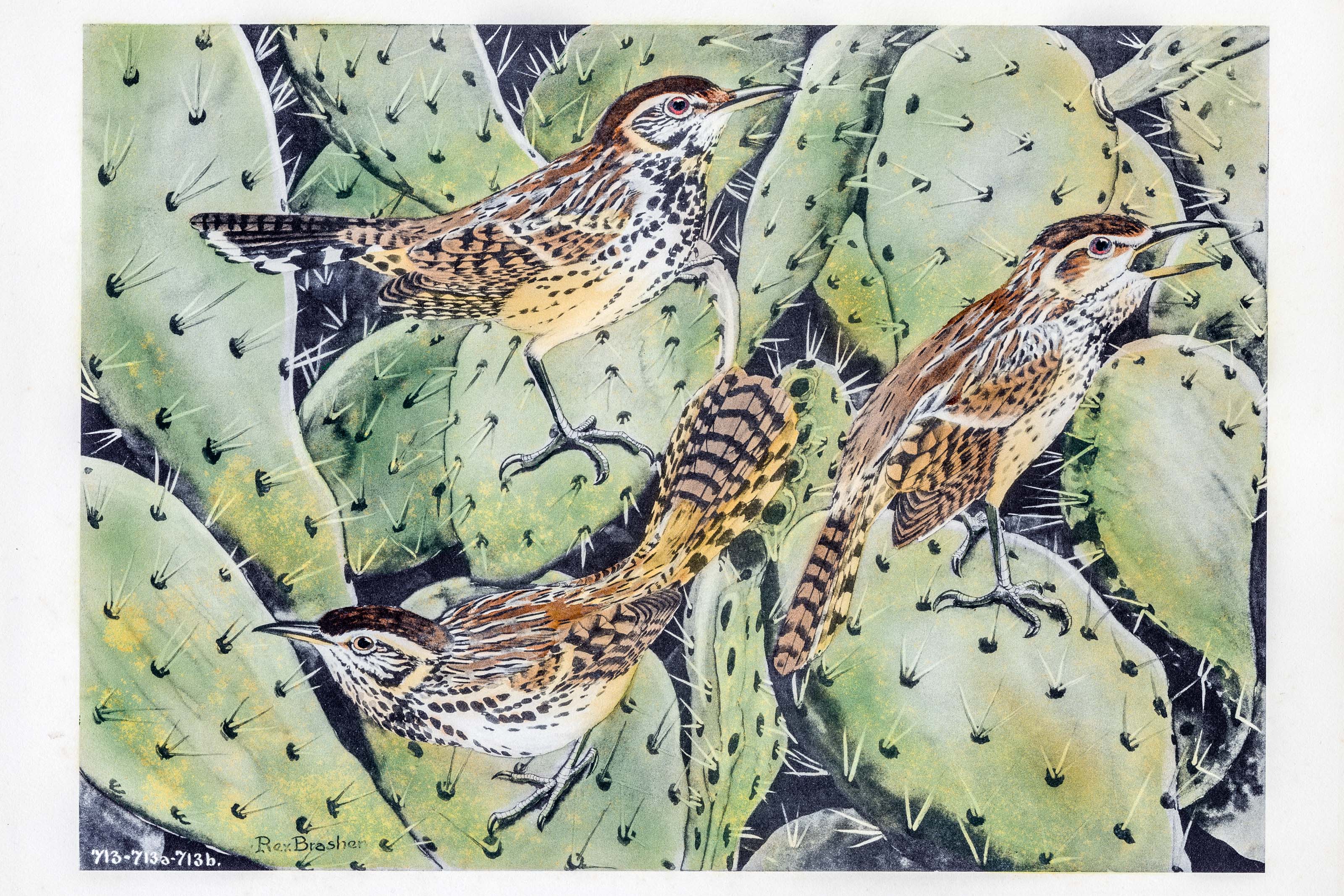
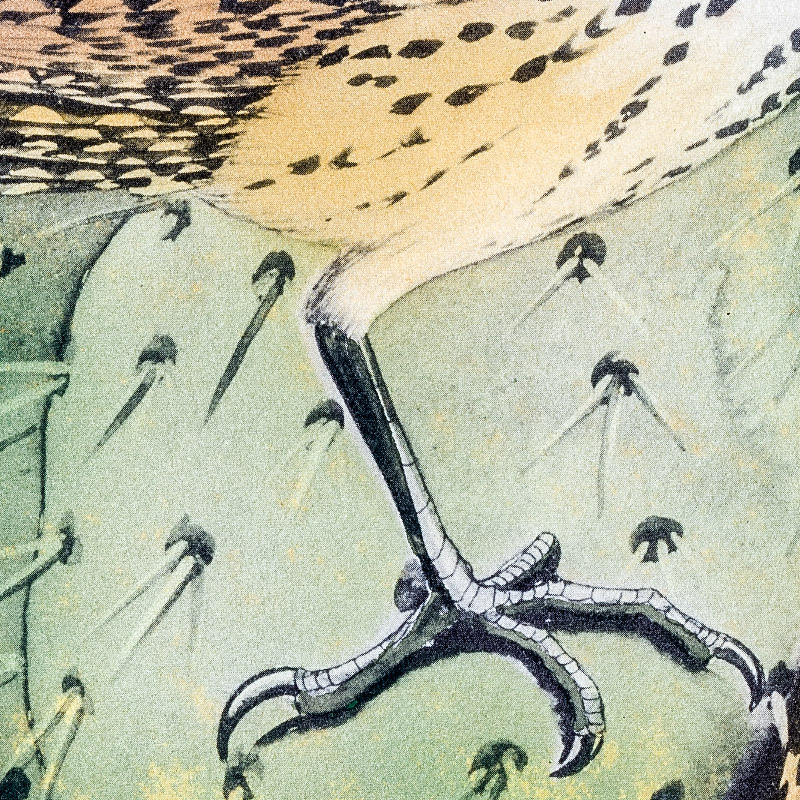
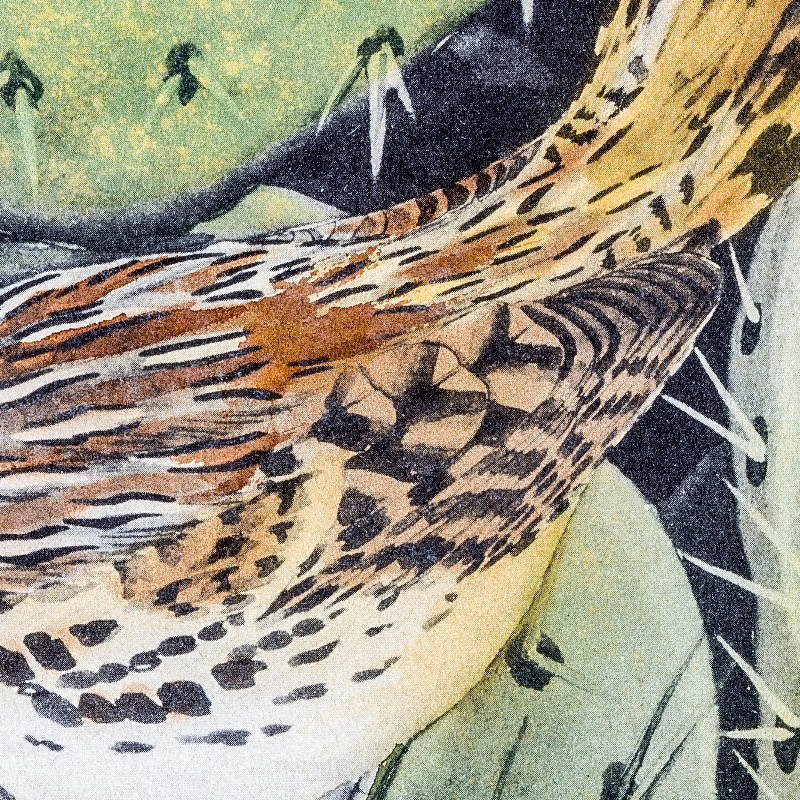

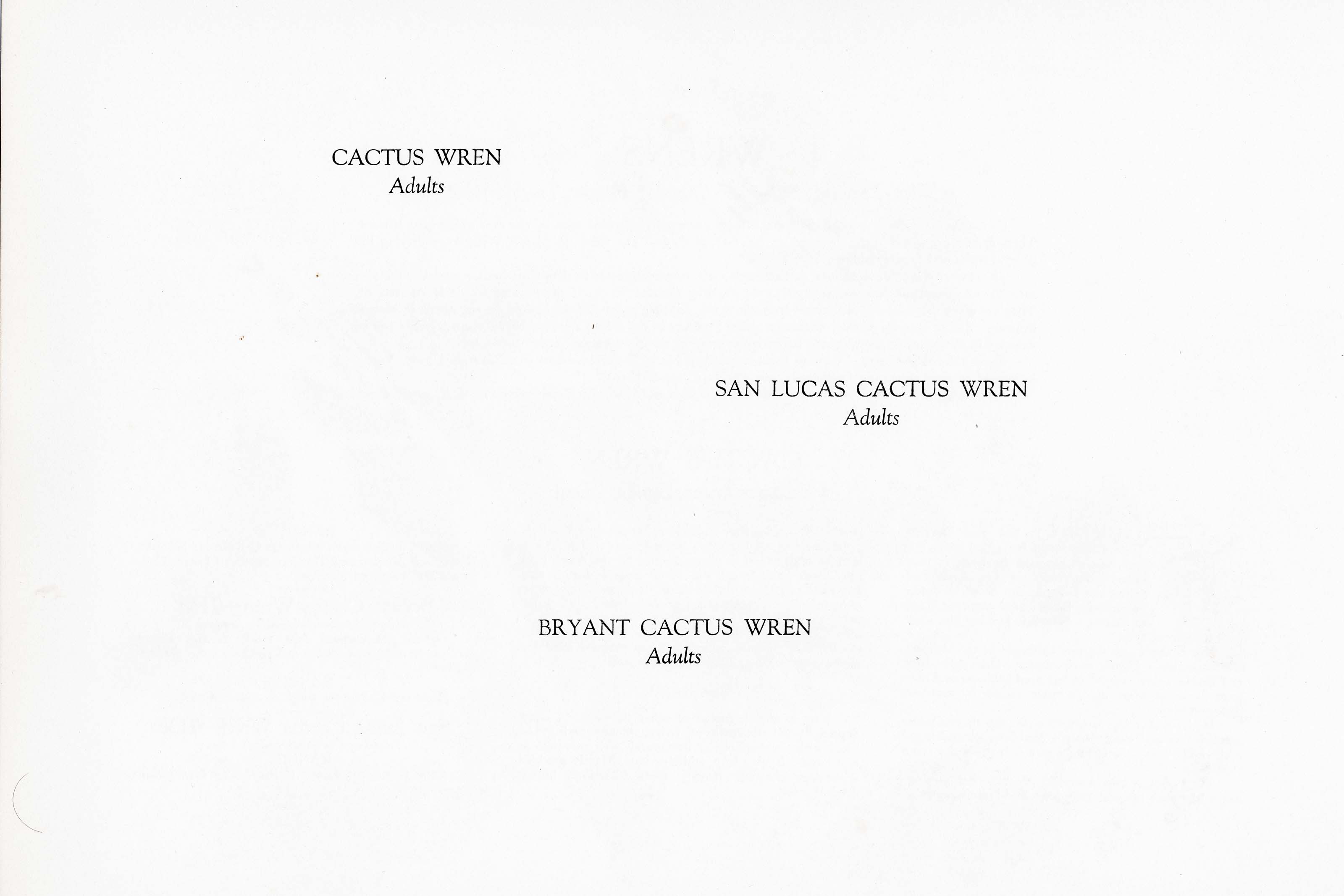
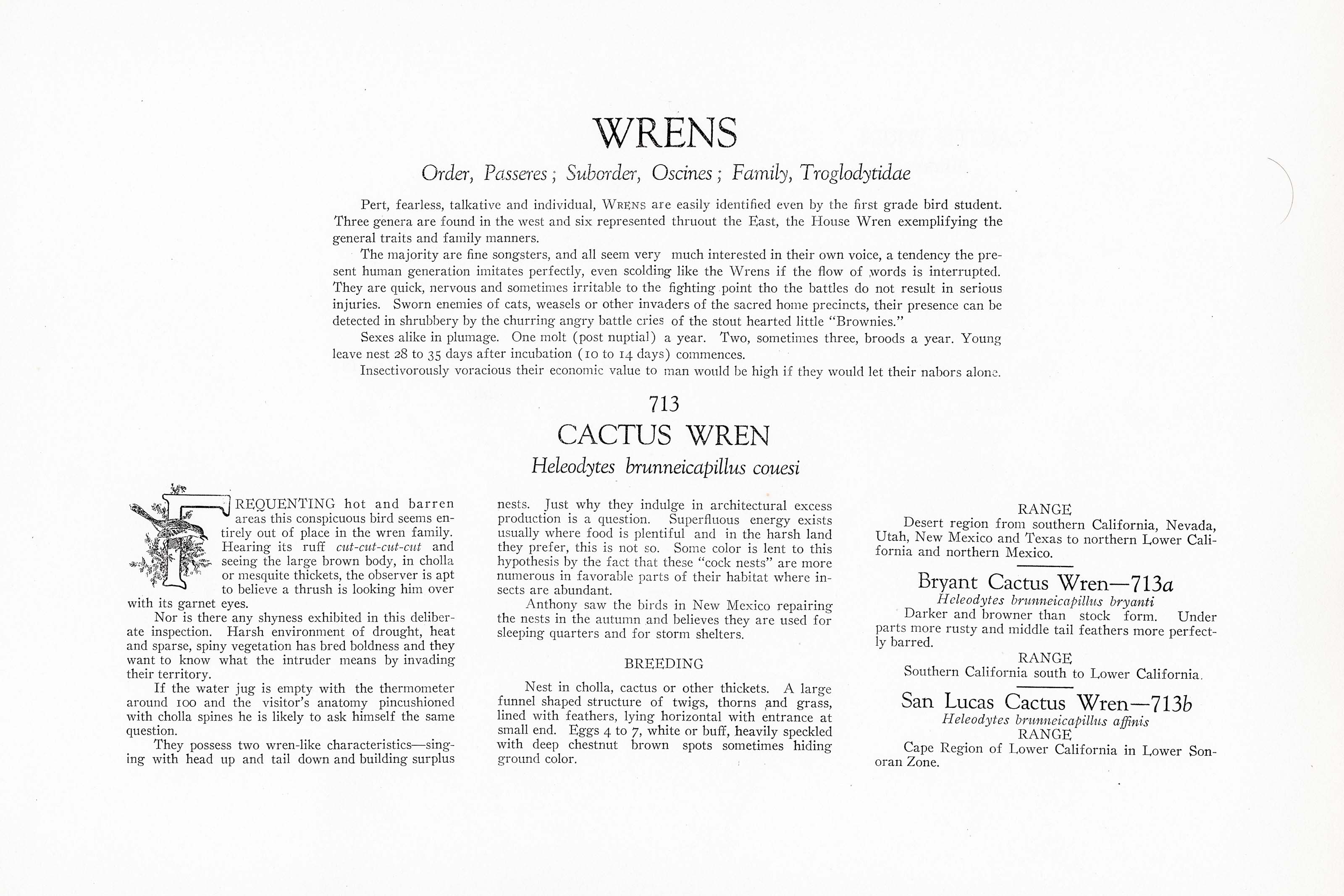

Unknown
1929
12
713-713a-713b
A team of dedicated board members, volunteers, and student interns has published every page in Volume 9. This volume includes 360 images of paintings and lyrical descriptions of birds, now available online for everyone to enjoy anywhere in the world. This is a monumental task. Each volume requires approximately 400 hours to photograph, edit, transcribe, catalog, and publish online. We need your support to complete this work.
If you're tech-savvy, have a good eye, are meticulous with details, and love structured data, please consider volunteering by emailing us at hello@rexbrasher.org.
We encourage all bird lovers and supporters to consider a monetary donation to support our mission to make Rex's work available for everyone. You can provide a one-time or recurring donation online.
FREQUENTING hot and barren areas this conspicuous bird seems entirely out of place in the wren family. Hearing its ruff cut-cut-cut-cut and seeing the large brown body, in cholla or mesquite thickets, the observer is apt to believe a thrush is looking him over with its garnet eyes.
Nor is there any shyness exhibited in this deliberate inspection. Harsh environment of drought, heat and sparse, spiny vegetation has bred boldness and they want to know what the intruder means by invading their territory.
If the water jug is empty with the thermometer around 100 and the visitor's anatomy pincushioned with cholla spines he is likely to ask himself the same question.
They possess two wren-like characteristics — singing with head up and tail down and building surplus nests. Just why they indulge in architectural excess production is a question. Superfluous energy exists usually where food is plentiful and in the harsh land they prefer, this is not so. Some color is lent to this hypothesis by the fact that these "cock nests" are more numerous in favorable parts of their habitat where insects are abundant.
Anthony saw the birds in New Mexico repairing the nests in the autumn and believes they are used for sleeping quarters and for storm shelters.
Nest in cholla, cactus or other thickets. A large funnel shaped structure of twigs, thorns and grass, lined with feathers, lying horizontal with entrance at small end. Eggs 4 to 7, white or buff, heavily speckled with deep chestnut brown spots sometimes hiding ground color.
Desert region from southern California, Nevada, Utah, New Mexico and Texas to northern Lower California and northern Mexico.
Darker and browner than stock form. Under parts more rusty and middle tail feathers more perfectly barred.
Southern California south to Lower California.
Cape Region of Lower California in Lower Sonoran Zone.